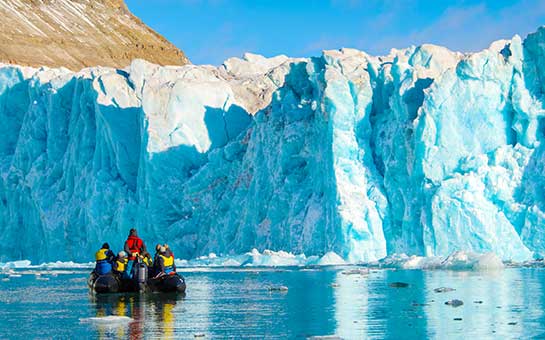Are you an explorer? Then you should consider joining an Arctic expedition. The Arctic is one of the very few places on earth still on the edge of the maps. Its bleak, snow-swept landscape is both beautiful and challenging.
The Arctic's uninhabitable weather conditions and subzero temperatures make it a place full of hazards. But if you are looking for a once-in-a-lifetime daring adventure, then Arctic expeditions should top your list.
Before you embark on such a dangerous voyage, secure yourself against massive medical expenses with Arctic insurance. This will help cover the medical bills should any unfortunate injuries or accidents occur during your trip.
Travel Insurance for Arctic Exploration
If you are careful and follow the experts' instructions, you will be safe. But you must prepare for every eventuality. Services like medical treatment and emergency evacuation are expensive in the Arctic region. Securing yourself with Arctic exploration insurance will ensure that you medical treatment as promptly as possible under the circumstances without depleting your finances.
Most standard travel insurance plans do not cover the increased risks of adventure sports, especially one as perilous as an Arctic expedition. So, be sure to buy a hazardous sports travel insurance plan before you head out into the snow.
Tips for Joining an Arctic Expedition
The first explorer to reach the frozen sea was the Greek sailor Pytheas in 350 B.C. Vikings also colonized Greenland during the 10th century. But it took much longer before the first Arctic expedition reached the North Pole under Robert Peary in 1909.
You can plan your Arctic expedition by joining an Arctic cruise or going with an independent group. The risks are much less when you are on the cruise, as the ship will have doctors, indoor heating, and all the modern luxuries. But you would still have to deal with the hazards of extreme weather conditions.
Joining an independent group travelling by foot is both thrilling and dangerous. The key to reducing risks is planning ahead and training before the expedition starts. Always have experts in your group, and follow their lead.
You will need to carry a lot of extreme cold-weather gear. Hypothermia and dehydration are the chief risks when traveling through the Arctic. Choose the right fabric for your clothes and pack enough socks. Remember not to use cotton socks, as they can result in you getting trench foot or frostbite. Also, pack adequate protective eyewear to prevent snow blindness.
Risks of Arctic Exploration
There are no shortages of risks in the Arctic. Dehydration, hypothermia, frostbite, trench foot, and snow blindness are all common occurrences.
The air is very dry up there, so you must compensate by drinking more water. Dehydration can quickly spiral out of control, resulting in your body shutting down, unable to maintain the body temperature. You have to be very aware of the signs of hypothermia and dehydration. It’s easier to do this by working together in teams of two or more.
Apart from these, there are accidental hazards when you cross untested snow. It can collapse and severely injure you. Follow experienced guides to avoid such mishaps.
Even with modern protective gear, Arctic expeditions are inherently risky. Before joining the expedition be sure to cover yourself with adventure sports travel insurance.
